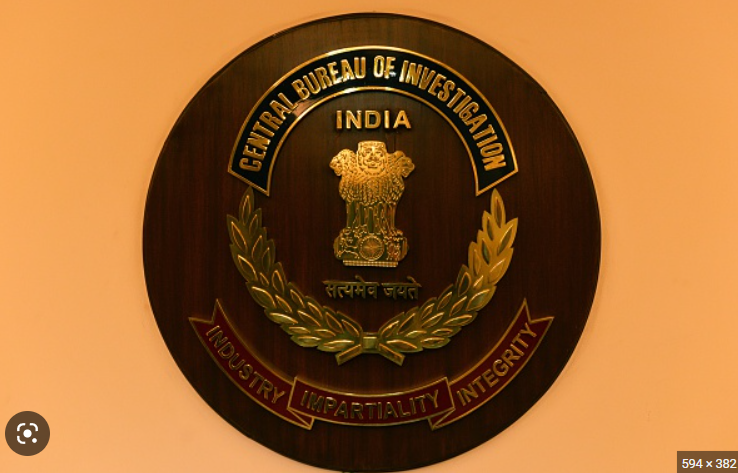Table of Contents
The objectives of the auditing:
Auditing examines an organization’s financial and operational records to ensure accuracy and compliance with applicable laws and regulations. Auditing also helps guard against fraud and improper business practices.
The objectives of auditing are to ensure that an organization’s financial statements are true, accurate, and complete; identify any material misstatements or irregularities; assess the effectiveness of internal controls; and review the organization’s compliance with applicable laws and regulations.
In order to achieve these objectives, auditors must have a thorough understanding of the organization’s business operations, its internal control environment, and relevant laws and regulations.
Auditors must also have the appropriate technical skills and knowledge to evaluate the accuracy of the organization’s financial records and to detect any material misstatements.
A key part of the auditing process is the development of an audit plan, which outlines the objectives, scope, and methodology of the audit.
The objectives of auditing typically include the following:
1. To review the accuracy and completeness of the financial statements.
2. To identify and assess the effectiveness of internal controls.
3. To evaluate the reliability of the accounting systems and procedures.
4. To detect any irregularities or fraud.
5. To assess the organization’s compliance with applicable laws and regulations.
6. To evaluate the overall financial health of the organization.
7. To provide assurance that the organization’s financial records are accurate and complete.
8. To identify potential areas of risk and recommend corrective actions.
The objectives of auditing serve as a guide for the auditor in their assessment and evaluation of the organization’s financial information. The auditor’s primary objective is to provide an independent opinion on the accuracy and completeness of the financial statements.
Auditors must be diligent in their efforts to identify any material misstatements or irregularities and should be proactive in recommending any corrective actions necessary.

Financial reporting:
The primary objective of financial reporting is to provide useful information to the users of financial statements. This information assists the users in making informed economic decisions.
Financial reporting involves the preparation of financial statements that capture a company’s financial performance over a given period. The objectives of financial reporting are as follows:
1. To provide information that is useful to investors and creditors when making decisions about investing in or providing credit to the company.
2. To provide information that is useful to management when making decisions about the allocation of resources and about the current and future performance of the company.
3. To provide information that is useful to regulators and other stakeholders when assessing the company’s compliance with applicable laws and regulations.
4. To provide information that is useful for assessing the company’s financial performance and position. The objectives of auditing are to provide a level of assurance that the financial statements are free from material misstatement.
Auditing involves the examination of evidence to form an opinion on financial statements. This opinion is expressed in an auditor’s report. The objectives of auditing include:
1. To verify the accuracy, completeness, and reliability of the financial statements.
2. To detect material misstatements or fraud in the financial statements.
3. To evaluate the appropriateness of the accounting policies used in the preparation of the financial statements.
4. To assess the effectiveness of internal controls.
5. To evaluate the going concern assumption.
6. To provide an opinion on the financial statements. Financial reporting and auditing are two distinct processes, but they are closely related.
Financial reporting is the process of preparing and presenting financial statements, while auditing is the process of examining and evaluating financial statements. Both processes are necessary to ensure the accuracy, completeness, and reliability of financial statements.
The Risk assessment:
Risk assessment is one of the most important objectives of auditing. The main purpose of risk assessment is to identify potential threats to the accuracy and completeness of financial information and to devise appropriate measures to reduce the risk of material misstatements.
The auditor must also assess the risk of material misstatement due to fraud, which is a type of intentional misstatement. Risk assessment begins with the auditor obtaining an understanding of the client’s internal control environment and assessing the risk of material misstatement.
The auditor should consider the entity’s internal control system, the accounting policies and procedures, and the nature of the transactions and balances. The auditor should also consider the level of financial literacy and management experience of the client’s personnel.
The auditor should also consider the specific risks of material misstatement due to fraud. These may include inappropriate and/or unauthorized transactions, misappropriation of assets, and other forms of financial dishonesty. The auditor should assess the risk of fraud in each of the financial statements, including the balance sheet, income statement, and statement of cash flows.
The auditor should also assess the risk of material misstatement due to errors and omissions. This may include mistakes in the preparation of financial statements, incorrect recognition of revenue or expenses, and misclassification of accounts.
Finally, the auditor should assess the risk of material misstatement due to changes in economic, market, and industry conditions. This may include changes in the value of assets, liabilities, or investments, changes in terms of loans or contracts, and changes in the competitive landscape.
The auditor should document the results of the risk assessment in an audit program. The audit program should identify specific audit procedures to address the risks identified in the risk assessment. The audit program should also include plans for responding to the results of the audit procedures.
Fraud detection:
Fraud detection is one of the main objectives of auditing. Fraud is defined as any intentional act that is designed to deceive or manipulate the financial statements of an organization.
Auditors are responsible for detecting and preventing fraud in order to ensure the accuracy and reliability of financial statements. Auditors use a variety of techniques to detect fraud in the financial statements of an organization.
These include examining bank statements for unusual transactions, reviewing internal controls, analyzing accounts for unusual patterns or trends, and comparing financial statements to prior years.
Auditors also use data analytics to look for anomalous patterns and trends in financial data. Additionally, auditors may conduct interviews with management and staff in order to determine whether any fraudulent activity has occurred.
Auditors also use fraud risk assessments to identify potential areas of fraud and to develop strategies to mitigate the risk. The assessment includes an analysis of the organization’s internal controls and procedures, as well as its environment and culture. Auditors also review the policies and procedures of the organization to ensure they are up-to-date and effective.
Finally, auditors use forensic accounting techniques to analyze financial data and detect fraud. Forensic accounting involves the use of investigative techniques to uncover discrepancies and irregularities in financial statements.
It is used to detect and prevent fraud by identifying unusual patterns or trends in financial data. Auditors use a variety of techniques to detect fraud and ensure the accuracy of financial statements.
By using a combination of risk assessments, data analysis, interviews, and forensic accounting, auditors are able to detect and prevent fraud. This is essential to ensuring the accuracy and reliability of financial statements and protecting the interests of investors and the public.
Assessing internal controls:
Assessing Internal Controls in the Objectives of Auditing is an important part of the auditor’s job. It helps the auditor evaluate the effectiveness of the internal controls in place at the entity being audited.
Internal controls are the procedures, policies, and systems used by a company to ensure it operates properly, safeguards assets, and accurately reports financial information.
Auditors are responsible for evaluating the adequacy of these internal controls and ensuring their effectiveness. One of the key objectives of auditing is to express an opinion as to whether the financial statements are fairly stated in accordance with generally accepted accounting principles.
To do this, auditors must assess the internal controls in place to ensure that financial information is accurately and reliably recorded. The assessment of internal controls involves looking at the design, implementation, and effectiveness of the internal controls. This includes an examination of the:
o Policies and procedures that guide the accounting process. o Processes used to record and maintain financial information.
o Systems used to track and report financial information.
o Segregation of duties to ensure accuracy and prevent fraud.
o Internal audit functions to monitor and verify financial information. The audit must also assess the extent to which the internal controls are in compliance with applicable laws and regulations.
The assessment of internal controls helps the auditor determine the level of audit risk associated with the financial statements, which in turn affects the extent of audit procedures necessary to obtain sufficient and appropriate audit evidence.
The assessment of internal controls is also important for detecting any material misstatements in the financial statements. The auditor can use the results of the assessment to identify areas of risk that may require further audit procedures.
Assessing internal controls is a critical step in the audit process and helps the auditor obtain reasonable assurance that the financial statements are free of material misstatement.
Compliance with Laws and Regulations:
Objectives of auditing should include compliance with laws and regulations. Auditors must assess the accuracy, completeness, and conformity of financial statements and other financial information with applicable accounting principles and other relevant laws and regulations.
Auditors should also examine the organization’s internal control systems to ensure that they are designed to comply with relevant laws and regulations. Auditors should ensure that the organization has adequate control systems to identify and manage legal and regulatory risks.
These systems should be designed to provide reasonable assurance that the organization is complying with all relevant laws and regulations. Auditors should also assess the quality of the organization’s compliance procedures, such as evaluating the effectiveness of management oversight of compliance activities.
Auditors should also assess the organization’s ability to detect and respond to compliance violations and errors. Auditors should conduct a formal review of the organization’s compliance policies and procedures, including the content and implementation of those policies and procedures.
Auditors should also consider any changes to the organization’s policies and procedures that may be necessary to comply with relevant laws and regulations. Auditors should also assess the effectiveness of the organization’s system of internal controls related to compliance with laws and regulations.
This includes evaluating the reliability and accuracy of the organization’s financial statements and other financial information and ensuring that the organization’s processes and procedures are designed to detect and prevent compliance violations and errors.
Finally, auditors should consider the organization’s ability to detect, assess and respond to any non-compliance with relevant laws and regulations. Auditors should also perform additional tests and procedures to provide reasonable assurance that the organization is in compliance with laws and regulations.
The Management consulting:
Management consulting, also known as management consulting, is an area of professional services that provides advice and guidance to businesses, organizations, and governments.
The objectives of management consulting typically involve helping organizations to improve their performance, develop new strategies and identify new opportunities.
The primary objective of management consulting is to provide businesses with the tools and resources they need to achieve their goals. This includes providing advice on utilizing resources, improving operational efficiency, developing marketing strategies, and identifying new markets and opportunities.
Management consultants may also provide support in financial planning, budgeting, and capitalization. They can also help to develop new processes and systems for businesses, as well as provide guidance on how to handle organizational changes.
Another objective of management consulting is to provide expertise in areas such as human resources, operations, IT, and logistics. Management consultants may also help to identify and implement new technologies and systems, as well as provide training and development for staff.
When it comes to auditing, management consultants can provide invaluable assistance. Auditors can benefit from their expertise in understanding the business and its processes.
Auditors can also use management consultants to help them assess the financial health of the business, identify areas of risk, and analyze financial statements. Management consulting can also be used to provide valuable feedback to businesses.
This can help businesses to identify areas of improvement and take corrective action. Overall, management consulting can provide valuable support to businesses and organizations by helping them to achieve their objectives.
They can provide advice and guidance on how to use resources best and develop strategies, as well as provide expertise in areas such as financial planning, budgeting, and capitalization.
In addition, they can support auditors in assessing the business’s financial health, identifying areas of risk, and analyzing financial statements.
The conclusion:
The conclusion for the objectives of auditing is that the objective of auditing is to provide assurance that financial statements are free from material misstatement and to provide an opinion on the fairness of the financial statements.
This objective is achieved through the execution of objective tests, inquiries, analytical procedures, and the exercise of professional judgment. Auditing also provides reasonable assurance that the financial statements are in compliance with applicable laws and regulations. Furthermore, auditing helps to ensure that the financial statements are prepared in accordance with generally accepted accounting principles.
By obtaining an understanding of the entity’s internal control, the auditor can identify and assess the risk of material misstatement and design the audit procedures to address the risks.
The objective of auditing is to provide reasonable assurance that the financial statements are free from material misstatement and to provide an opinion on the fairness of the financial statements.
The audit report is the auditor’s opinion on the fairness of the financial statements in accordance with the applicable financial reporting framework.
Also read, Forest Resources































Comment on “Objectives of Auditing”
Comments are closed.